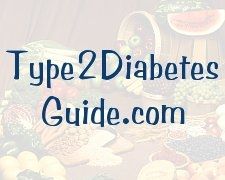Hyperglycemia - Control & Treatment in Type 2 Diabetes
Symptoms
Signs will vary from person to person but can include:
- Increased thirst (which can result in more frequent urination);
- Increased hunger (even if you just ate) - diabetics are unable to properly absorb the glucose in the blood;
- Headaches;
- Weight loss;
- Fatigue or lack of energy;
- Problems concentrating;
- Blurred vision;
- Wounds that heal slowly;
- Dry mouth;
- Itchy skin;
- Impotence in men and vaginal yeast infections in women.
Causes
Diabetics may develop high blood glucose due to many causes. These include skipping or forgetting to take your insulin or your medication; overeating; eating a meal with too many carbohydrates; a decrease in exercise or overly-strenuous physical exercise; illness or stress; or infections.
Blood Glucose Levels
Fasting hyperglycemia is the amount of glucose in the blood after fasting for 8 hours. Target blood sugar levels for diabetics are typically between 72-126 mg/dL (4.0 to 7.0 mmol/L). If you consistently test higher than this, you may need to make changes to your eating habits, exercise routine, or medication.
Postprandial or after-meal hyperglycemia occurs when blood sugar levels are higher than 180 mg/dL (10 mmol/L). If you consistently have these types of blood sugar levels and have not yet been diagnosed as diabetic, be aware that you may be at high risk for developing the disease.
Acute Hyperglycemia
Acute hyperglycemia can be a medical emergency. The body attempts
to get rid of excess blood sugar through increased urination - leading
to dehydration and may even lead to a serious condition called
ketoacidosis. Untreated, it can result in death. Symptoms include
excessive thirst and frequent urination, weakness, excess fatigue, mental
confusion, shortness of breath, nausea and inability to hold down food or
drink, vomiting, stomach pain, and "fruity"-smelling breath. A
urine test,
which you can do at home, can check for the presence of ketones.
If you have ketones in your urine and/or you show multiple symptoms of
acute hyperglycemia, or if your blood sugar levels exceed 300 mg/dL (16.7 mmol/L),
get emergency medical care.
Treatment, Prevention, and Control
High blood sugar can lead to many additional health complications. Diabetics can manage their blood sugar levels with these tips:
- Monitor blood glucose
levels regularly. This will alert you to high (or low) blood sugar levels. Keep track of your readings
in a log book
. Make notes next to any abnormal readings, noting any changes to meals, exercise, or other routines. Keeping a log book is a useful tool to show to your doctor or diabetes educator.
- Drink lots of water so that you stay hydrated. Try to avoid beverages with alcohol or caffeine.
- Take medications as prescribed, when prescribed.
- Exercise! Regular exercise helps to control blood glucose levels.
- Eat a healthy and varied diet. Not sure what you need? Ask your doctor or get a referral to a dietitian or nutritionist. Some diabetics use the glycemic index to help them plan the foods to include in their meals.
- Visit your doctor regularly and bring up any new concerns. Make sure to mention if you have been repeatedly experiencing symptoms of hyperglycemia.
Additional Reading:
- How to Handle High Blood Sugar - How it Affects Diabetics
- What Gets Blood Sugar Down?
- What Is the Role of Diet in Type 2 Diabetes?
- Diabetes Information for Caregivers
- What is the Honeymoon Phase in Diabetes?
- How to Handle High Blood Sugar - Preventing Complications
- Diabetes & Portion Control
- Basic Information for Glucometers
What Causes Diabetes?
Insulin Resistance
Signs of Diabetes
Hypoglycemia
Hyperglycemia
Glycemic Index
Diabetic Recipes
Feline Diabetes
Diabetes Diet Sheet
How to Control Diabetes Without Medication
What Foods Have a Low Glycemic Index?
Conversion Chart for Blood Sugar Levels




